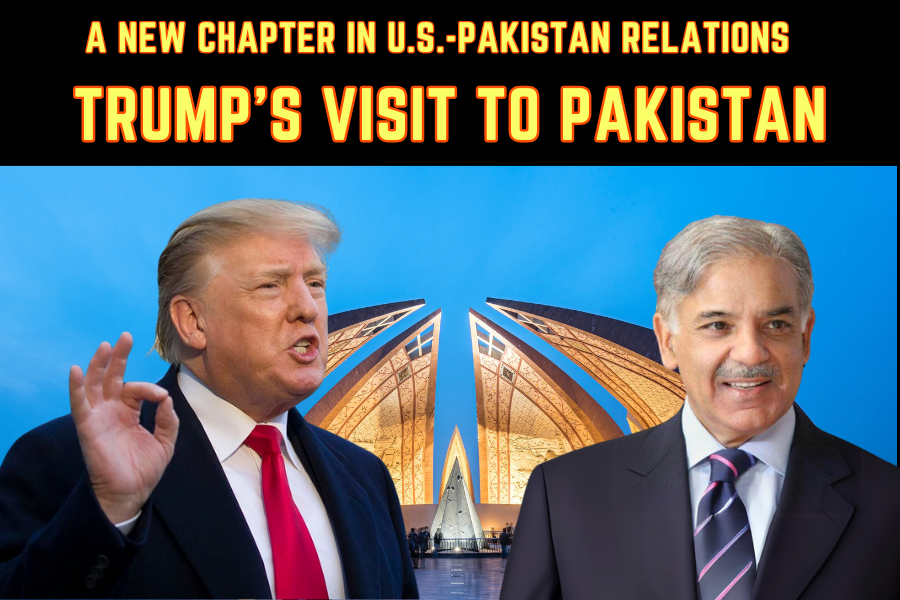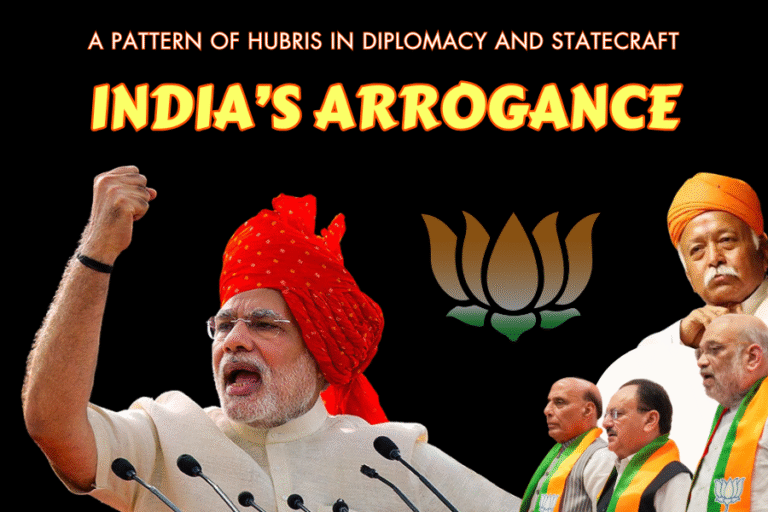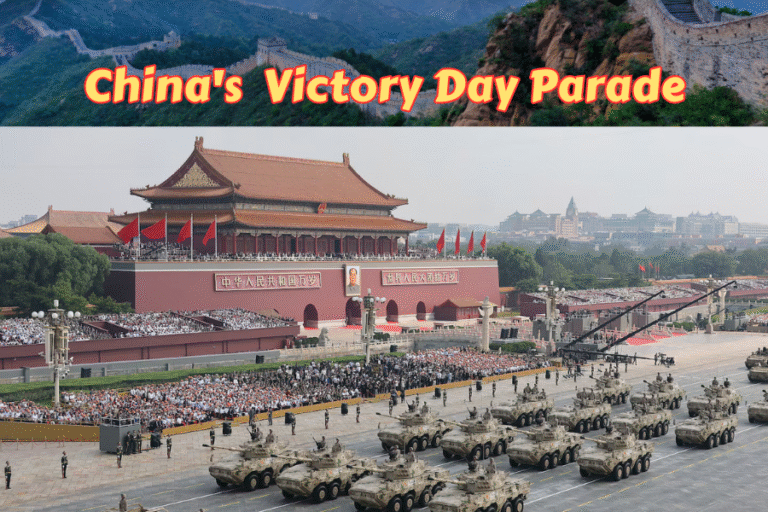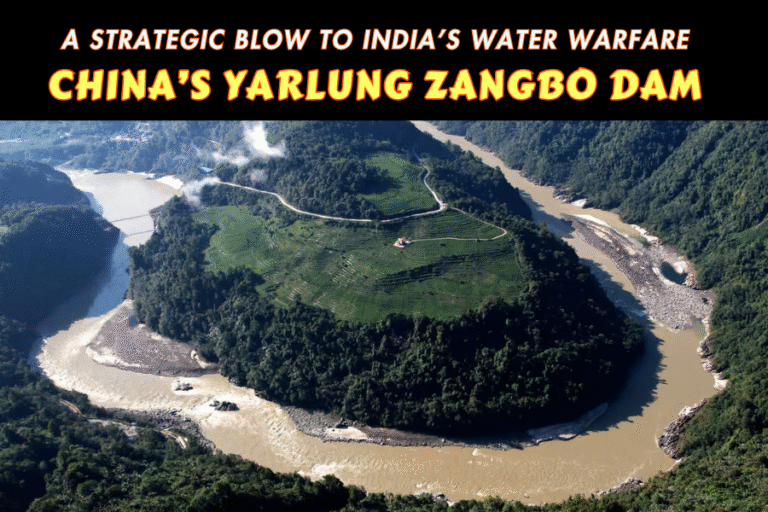(By Khalid Masood)
I. Introduction: Significance of Trump’s Visit
Reports of U.S. President Donald Trump’s potential visit to Pakistan on 18 September 2025, the first by a U.S. president since George W. Bush’s 2006 trip, have sparked anticipation, though both Pakistan’s Foreign Office and the White House have clarified no such visit is confirmed at this time. Local media, citing unnamed sources, suggested Trump might also visit India as well after visiting Pakistan, but retractions underscore the visit’s uncertainty. If realized, it could mark a pivotal moment for Pakistan-U.S. relations, building on warming ties evidenced by Trump’s White House lunch with Pakistan’s army chief, Field Marshal Asim Munir, in June 2025. Pakistan, navigating economic recovery and terrorism resurgence, sees the reported visit as an opportunity to bolster its global standing and counter India’s geopolitical propaganda, particularly the Indus Waters Treaty suspension in April 2025 following the Pahalgam attack. Trump’s first term (2017–2021) saw a transactional approach, cutting $1.3 billion in security aid, yet recent praise for Pakistan’s counterterrorism efforts suggests a thaw. This article explores the visit’s background, challenges, prospects, objectives, reactions, regional implications, security arrangements, and potential outcomes in 2025.
II. Background: U.S.-Pakistan Relations and Trump’s Policy Stances
Pakistan-U.S. relations, established in 1947, have oscillated between close cooperation and deep mistrust, often tied to U.S. strategic interests in Afghanistan. During the Cold War and post-9/11, Pakistan was a key ally, supporting U.S. efforts against Soviet forces and the “war on terror.” Tensions peaked after Osama bin Laden’s 2011 discovery in Abbottabad, with U.S. leaders questioning Pakistan’s reliability. Trump’s first term saw a hardline stance: he slashed security aid, labelled Pakistan a “safe haven” for terrorists, and strengthened U.S.-India ties to counter China. His 2019 meeting with then-Prime Minister Imran Khan offered mediation on Kashmir, alarming India, but yielded limited results.
Since January 2025, Trump’s second term has shown a shift. His public commendation of Pakistan’s role in capturing Mohammad Sharifullah, an ISIS-K leader linked to the 2021 Kabul airport bombing, and the release of $397 million for Pakistan’s F-16 maintenance signal renewed counterterrorism collaboration. Pakistan’s nomination of Trump for the 2026 Nobel Peace Prize for brokering the May 2025 India-Pakistan ceasefire, despite controversy over his Iran strikes, underscores this rapprochement. However, Pakistan’s economic challenges and tensions with India over May 2025 Indo-Pak War and the Indus Waters Treaty suspension complicate the relationship, setting the stage for a high-stakes visit.
III. Present Challenges for Pakistan
Pakistan faces significant challenges as it prepares for Trump’s visit:
- Economic Instability: Despite a $7 billion IMF bailout in September 2024, Pakistan grapples with unsustainable debt and high inflation, limiting its ability to leverage the visit for economic gains.
- Terrorism Resurgence: Attacks by the Tehreek-e-Taliban Pakistan (TTP) and Balochistan Liberation Army (BLA), such as the March 2025 train hijacking killing 11, strain security resources and shape U.S. expectations.
- Geopolitical Tensions: May 2025 Indo-Pak War and Indus Waters Treaty suspension and accusations of Pakistan’s links to the April 2025 Pahalgam attack escalate regional friction, while U.S.-China rivalry pressures Pakistan’s neutral stance.
- Domestic Political Turmoil: The disputed 2024 election and Imran Khan’s incarceration fuel unrest, with opposition parties like PTI demanding his release, potentially overshadowing the visit’s narrative.
IV. Diplomatic Objectives
Pakistan’s Objectives
Pakistan aims to leverage Trump’s visit to:
- Enhance Counterterrorism Cooperation: Secure U.S. support against TTP and BLA, building on the Sharifullah arrest, to strengthen domestic security.
- Boost Economic Ties: Attract U.S. investment in critical minerals, cryptocurrency, and trade deals with zero tariffs, addressing economic vulnerabilities.
- Counter India’s Narrative: Highlight Pakistan’s role as a peacemaker, countering India’s geopolitical propaganda and Indus Waters Treaty suspension, while reinforcing its mediation role in regional conflicts.
- Elevate Global Standing: Present Pakistan as a stable, cooperative partner, enhancing its diplomatic influence amidst asymmetric warfare challenges.
Trump’s Agenda
Trump’s likely objectives include:
- Counterterrorism Collaboration: Prioritize U.S. interests, such as targeting ISIS-K, while pressing Pakistan to act against TTP without committing to a broad security partnership.
- Economic Opportunities: Explore Pakistan’s rare earth minerals and cryptocurrency markets, aligning with his “America First” policy to secure strategic resources.
- Regional Stability: Leverage Pakistan’s ties with Iran and the Taliban to de-escalate Middle East tensions and stabilize Afghanistan, while balancing U.S.-India ties.
- Personal Diplomacy: Capitalize on Trump’s affinity for strongmen, like General Asim Munir, to advance U.S. interests through personal rapport, potentially overshadowing institutional ties.
V. Public and Political Reactions in Pakistan
Government Officials
Prime Minister Shehbaz Sharif and the military, led by Field Marshal Asim Munir, view the visit as a diplomatic triumph, reflecting Pakistan’s re-emergence as a strategic partner. Sharif’s praise for Trump’s counterterrorism acknowledgment and Munir’s White House meeting underscore optimism for enhanced ties. The government’s Nobel Peace Prize nomination for Trump, despite backlash, signals confidence in leveraging his influence.
Opposition Parties
The Pakistan Tehreek-e-Insaf (PTI) sees the visit as a chance to push for Imran Khan’s release, hoping Trump’s rapport with Khan will sway U.S. policy. However, parties like Jamiat Ulema-e-Islam Fazl (JUI-F) criticize the government’s “crass flattery,” particularly after Trump’s Iran strikes, viewing the visit as a risky alignment with U.S. interests.
Civil Society
Civil society is polarized. Intellectuals like Maleeha Lodhi, a former ambassador, condemn the Nobel nomination as humiliating, fearing the visit prioritizes military ties over democratic reforms. Human rights activists worry about U.S. pressure on Pakistan’s foreign policy autonomy, especially amidst India’s malicious propaganda and Indus water treaty suspension.
Citizens
Public sentiment ranges from pride in Pakistan’s diplomatic resurgence to skepticism about Trump’s motives. Posts celebrate the visit as a “defining moment” but question its focus on optics over policy. Protests in Karachi against Trump’s Iran strikes highlight anti-U.S. sentiment, complicating public reception.
VI. Regional Implications
Pakistan-India Relations
Trump’s visit could exacerbate Pakistan-India tensions, as India views U.S.-Pakistan rapprochement with suspicion. New Delhi denies U.S. mediation in the May 2025 ceasefire, framing Trump’s engagement as overlooking Pakistan’s alleged terrorism links. Pakistan may seek U.S. support to challenge India’s Indus Waters Treaty suspension, risking further friction.
Pakistan-China Relations
Pakistan’s deepening ties with China face scrutiny under Trump’s anti-China stance. Beijing’s support for Pakistan, evident in its condemnation of India’s treaty suspension, strengthens Islamabad’s position, but Trump may pressure Pakistan to distance itself from China, complicating neutrality.
Pakistan-Afghanistan Relations
Trump’s focus on ISIS-K aligns with Pakistan’s interest in curbing TTP cross-border attacks. However, U.S. demands for action against Afghan-based militants could strain ties with the Taliban, who deny harbouring TTP, impacting border stability.
Geo-Strategic Environment
The visit positions Pakistan as a potential mediator in U.S.-Iran tensions, leveraging its 900km border with Iran. However, public opposition to U.S. policies and India’s asymmetric warfare tactics, including water disputes, limit Pakistan’s leverage. Its role in the Shanghai Cooperation Organisation alongside India and China enhances its regional influence.
VII. Security Arrangements and Symbolism
Security Arrangements
Given the TTP and BLA’s resurgence, including the March 2025 train hijacking, robust security measures are anticipated. Elite ISI and military units will secure Islamabad, with heightened surveillance around the Presidency, Parliament, and Serena Hotel, where Trump is likely to stay. Restricted airspace and U.S. Secret Service coordination, as during Bush’s 2006 visit, will counter terrorism risks. Contingency plans will address protests, as seen in Karachi against Trump’s Iran strikes.
Symbolism and Historical Precedent
The visit, the first since Bush’s 2006 trip under General Pervez Musharraf, symbolizes a rare U.S. presidential engagement with Pakistan’s civilian-military leadership. Unlike past visits focused on Afghanistan, Trump’s trip highlights Pakistan’s relevance in counterterrorism and economic spheres. The reported conferment of Pakistan’s highest civilian award, Nishan-e-Pakistan, on 14 August 2025, underscores its diplomatic weight. The optics of Trump meeting Sharif and Munir reinforce the military’s influence, echoing historical U.S. engagements with Pakistan’s army chiefs.
VIII. Possible Outcomes
Agreements
- Counterterrorism Pact: Enhanced intelligence-sharing and U.S. support for targeting TTP, building on the Sharifullah operation.
- Economic Deals: Agreements on rare earth minerals or cryptocurrency partnerships to bolster Pakistan’s economy.
- Diplomatic Frameworks: Commitments to mediate regional disputes, leveraging Pakistan’s ties with Iran and Afghanistan.
Statements
- Joint Statement on Peace: Trump and Sharif may reaffirm commitment to regional stability, referencing the India-Pakistan ceasefire.
- Pakistan’s Mediation Role: Pakistan could be recognized as a mediator in U.S.-Iran or Afghanistan talks, elevating its diplomatic profile.
Controversies
- India’s Reaction: India may protest U.S. “meddling,” especially if Trump reiterates Kashmir mediation offers.
- Domestic Backlash: Opposition and civil society may criticize alignment with Trump, particularly after his Iran strikes.
- China Tensions: U.S. pressure to limit Pakistan’s China ties could spark diplomatic friction.
IX. Conclusion
The reported visit of President Trump, though unconfirmed by Pakistan’s Foreign Office and the White House, offers Pakistan a potential opportunity to reset Pakistan-U.S. relations if it materializes. Strengthened counterterrorism ties could stabilize Khyber Pakhtunkhwa and Balochistan, while economic partnerships in minerals and cryptocurrency could reduce IMF dependency. Pakistan must navigate U.S.-China tensions and India’s geopolitical propaganda, particularly the Indus Waters Treaty suspension, to maintain strategic autonomy. By leveraging the visit’s momentum, if it occurs, Pakistan can enhance its global standing, counter asymmetric warfare narratives, and foster regional stability. The uncertainty surrounding the visit underscores the need for Pakistan to prepare for both diplomatic opportunities and potential challenges in a volatile geo-strategic environment in 2025.







